Interview with CyBC, Cyprus
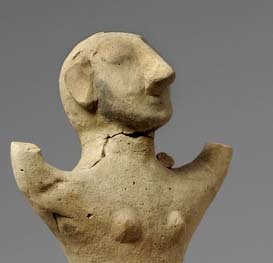
Marie-Louise Winbladh, Archaeologist, author
1971-2001 curator of the Cyprus Collections in Stockholm
http://cypernochkreta.dinstudio.se.
During 30 years, I always tried to mediate my conception about the Cypriot culture, which is unique and exceptional of its kind. Because of its strategic position in the Eastern Mediterranean, the tiny island always was in the focus of the superpowers and seldom was allowed to develop in peace. The island has been occupied by foreign powers since the Bronze Age and still is today, not only by Turkey...
The Cypriots never surrendered their own individuality or earlier achievements. Cyprus also influenced other cultures, as shown by the presence of Cypriot pottery all over the Mediterranean world. Indeed, Cyprus functioned as the intermediary of culture between Greece, the Near East and Egypt.
The Cypriote culture is quite unknown to most Swedes. One of my main tasks was to inform the visitors (I have written books and articles in Swedish) and attract people to come and see the exhibitions to learn about Cyprus.
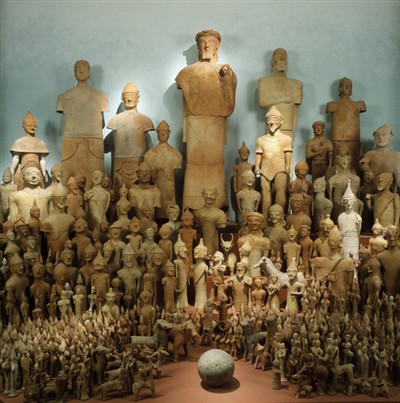
The Cyprus Collections are the largest and most important collections in the world outside Cyprus. There are collections in the Metropolitan Museum in New York and in the British Museum, but without documentation of find-context. The total number of finds from the excavations was c. 18,000, and the number received by the Swedes was about 12,000 or 65%.
The Swedish Cyprus Expedition (SCE) excavated throughout Cyprus between 1927 and 1931. During four years they investigated some 25 sites all over the island. SCE excavated tombs, sanctuaries and a few settlements and fortresses all over Cyprus. Their work was pioneering since it was the first time that excavations were carried out in Cyprus in a scholarly manner with documentation of the finds and their context in notebooks, on plans and photos. The SCE excavated for the sake of archaeology and not for private profit, which at the time was far too frequent. Many great museums in Europe and the USA have their storerooms filled with Cypriote antiquities, purchased from foreign diplomats carrying out ”excavations” in Cyprus. These collections have no context recorded, sometimes not even a provenance and were not adequately published at that time.
In the past I often was asked how Sweden was able to possess such a large amount of Cypriote antiquities. And then I told the famous story about four young men turned the Cypriote soil upside down when they excavated throughout the island. During only four years they investigated 25 sites all over the island; most of them now in the occupied area.
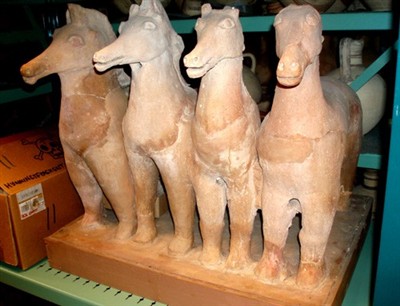
The magic moment when I first met the pots in June 1971 as a young student. I knew nothing about Cypriote archaeology, and nobody cared in the museum. Invaluable objects, hidden in the darkness of the basement. When I first entered the underground storerooms with rows of gourd shaped jugs in different sizes, and in a beautiful dark brown-red colour.. Besides, there were hundreds of small men in terracotta with pointed caps. Life-size terracotta statues in a stiff position greeted me with their right hand raised. They looked at me with big brown eyes and with an enigmatic smile on their lips. In another room there were limestone statuettes of attractive young men with a vigorous and powerful expression.
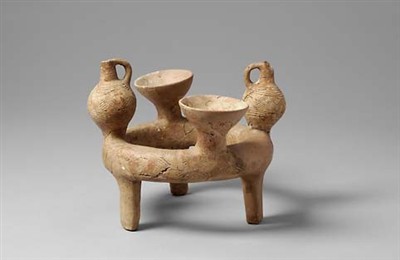
Many years later, I started to realise the importance of the Collection and the achievements of the SCE. At the university nobody mentioned Cyprus. Later in the 1970’s when foreign scholars came to the museum to study the Collection, I started to understand .. And then I met Alfiros one afternoon in the 1970’s ..
For more than 35 years, I was a curator at the Medelhavsmuseet in Stockholm, specialized on the archaeology of Cyprus and Crete. From 1971 until 2001 I was the curator of the famous Cyprus Collections in Stockholm, and I produced exhibitions and organized the work in the storerooms with the many precious antiquities housed in the museum. I have also written several books, been giving lectures, and many other tasks. My books deal with archaeology, history and religion on Cyprus and Crete during antiquity. I have made hundreds of lectures about Cyprus, Greece and Crete (popular and scholar).
The Cyprus Collection have been visited by hundreds of scholars from all over the world, studying different items. All these studies have resulted in dissertations, books and articles.
Most of the time I spent in the storerooms, a rather heavy and thankless task since I was responsible for the climatic conditions in the showcases and the basement, and the result was never visible. From 1971-1990 this responsibility also included the Greek-Roman collections in the museum and the conservation of all the items, including pottery, limestone, metal, glass etc. It is necessary to keep a correct and constant climate in showcases and store-rooms where terracottas and pottery are kept. The relative humidity (RH) should not exceed 55 % or fall below 45 % and the variations have to be restricted to a minimum, i.e. not more than 5 %. This is extremely important since the pottery from the Mediterranean countries contain large amounts of soluble and destructive salts.
I also tried to spend all the time I could in the archives of the Cyprus Collections in the museum, since they are also an important part of the museum.
Several times I was invited to Cyprus to lecture about the Cyprus Collections and my books. It was always a pleasure to see my friends in Cyprus and to meet an enormous interest in the Collections, since the contrast to the conditions in Sweden was immense. I have also participated in several TV-programs about Cyprus, archaeology (also in Cypriote RIK 1 in November and December 1998).
Since 2000 AD the museum, including the Cyprus Collections, belong to a new authority together with other three museums, and things have changed dramatically. The main task of the museum is now to be a modern, professional institution, where knowledge and experience are of no value. In 2006 I had to leave the museum since my qualifications were no longer needed. There is no curator of any collection and no knowledge about the Cyprus Collections.
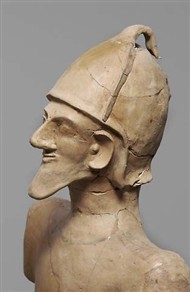 Old friend from Ayia Irini
Old friend from Ayia Irini
During 30 years I was lucky to be in charge of the Cyprus Collections. This created a passion for Cyprus and its fascinating and dramatic history. Almost 40 years afterwards my fascination for Cyprus has even deepened since my interests now also embrace the fate of medieval and modern Cyprus, including the Cyprus problem.
The Turkish invasion 1974 deeply affected my work in the museum. Neither had I ever the opportunity to visit the now occupied areas of Cyprus before the war. Since then I am very interested in Cypriote politics, but I didn’t start to write my own articles on the subject until in the 1990’s after a visit in Cyprus. I didn’t feel enough well informed to write about politics, but I wrote a lot about the cultural heritage of Cyprus, belonging to all of us, much of which was destroyed during the years after the invasion.
In 1996 I was invited by PIO to Cyprus. I had written many articles about the Cyprus Problem, translated into Greek by the Embassy in Stockholm, so I was temporarily considered a journalist.... One evening I was invited to lecture at Idalion, which was one of the main Swedish sites, where they excavated during Summer-Autumn 1928. The initiative to my lecture came from Chrysostomos Paraskevas, who was employed by the Swedes as a 12-year-old boy during the excavations on the western acropolis, the Ampilerí. Until 2007 he was the only surviving person from the excavations. I had met him a couple of years before, when he visited the Cyprus Collections in Stockholm and I was excited. In front of me I had a living piece of Cypriote history and of the Swedish excavations. I asked him if I could make an interview and he agreed. His English was excellent but he preferred to make an interview in Greek. We arranged for a video camera in the Cypriote exhibition and there we remained during four hours. His story was so exciting that I wanted to hear more and more.... I also asked him to narrate about the British occupation and he told me about the uprising against the Colonial power in 1930. Chrysostomos also told me about the poverty in Cyprus almost 80 years ago and that his mother and sisters were dependant on the boy’s tiny salary for survival. In 1931 when the Swedes had to leave Cyprus, Gjerstad got him a job in the Cyprus Museum where he stayed for 70 years. This must beat all records for remaining such a long time on the same place of work.
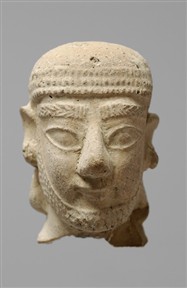 Old friend from Idalion
Old friend from Idalion
I arrived to Dali late in the afternoon and was guided around by Chrysostomos. He showed me the house where Erik Sjöqvist, one of the members of the Expedition, stayed during the excavations. Everything was almost the same as when Sjöqvist had lived in the house of Panayotis, which appears on many of the old photos from 1929. Chrysostomos also introduced me to Panayotis relatives, still living in the house. I was shown the workshop in a small storeroom where Sjöqvist used to study the finds of every day’s excavation.
Many people came and they were all very excited, since their fathers or grandfathers had been working with the Swedes and they of course had told the stories about the excavations to all their relatives.
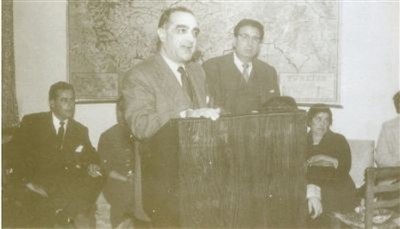
Dr Ihsan Dr Ali, ”My memoirs”
Published by Ihsan Dr Alis Foundation 2000
When I visited Cyprus 10 years later to make research and take photos, I also tried to meet people who actually had been involved in all this fighting or could tell me their impressions as former witnesses. One of my new acquaintances became both rewarding and fascinating. Cypriote friends in Sweden have arranged this meeting, since they know that I tried to make research for my book. I have always known that the truth doesn’t exist, especially if you were not there when it happened. But at least I wanted more knowledge. The man I was going to meet was a member of EOKA in the 1950’s and with long experience of politics.
I wanted to focus on the EOKA fighting against the British Colonial powers, the intercommunal fighting during the 1960’s and the tragic events in connection with the Turkish invasion 1974, initiated by the Greek fascist junta in Athens.
Kyrios N also recalled the name of a Turkish Cypriot doctor and intellectual, who became the closest adviser of the Archbishop who had “chosen” this man himself. The name of this remarkable Turkish Cypriot was Ihsan Dr Ali, who also has written a book of his life and his involvement in Cypriote politics. When I came back to Sweden again, I noticed that I just had borrowed this book from the Cyprus Embassy without knowing its importance. The book really was a revelation to me, offering new aspects of old problems. I wonder why this book is never mentioned in bibliographies of recent books about the Cyprus problem ... Dr Ali seems to have had a passion for his country and all his countrymen, without any exception. He was devoted to the Archbishop even if he sometimes was convinced that Makarios took the wrong decisions.
A Turkish Cypriot, honoured and loved also by the Greek Cypriots – could there be a better source for knowledge about the Cyprus problem?
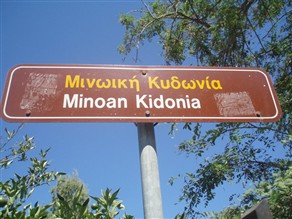
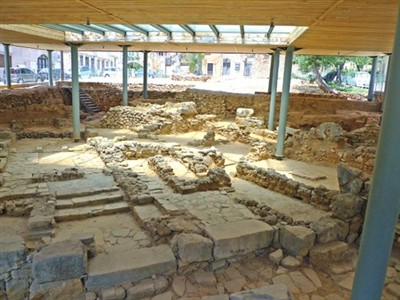
During the 1970’s I was a member of the Greek-Swedish Excavations at Chaniá in western Crete, and I am responsible for the publication of the stonevases and a main part of the terracotta figurines.
The joint Greek-Swedish Excavations were carried out 1970-1987 and the finds show that the site was inhabited during almost 5000 years. The modern habitation at the site, which cut into the earlier remains, caused the archaeologists many problems. The finds indicate that Chaniá once was an important Minoan town, perhaps even the capital and administrative centre for the western part of the island. This town probably corresponds to ancient Kydonia, which is mentioned on clay tablets from Knossos with signs in Linear B. The Minoan town is most probably located under the mondern town of Chaniá.
Most plausibly there is also a yet to be discovered palace in the vicinity of the excavated area.
These excavations have been mentioned by scholars as one of the most important projects of the last century, and with unique finds. The archaeologists have revealed parts of a large Minoan town of the Late Bronze Age, perhaps to be identified with the ancient Kydonia.
See also
Videocassette about Cyprus Collections, Stockholm.
“Cypriot Antiquities in the Medelhavsmuseet Stockholm”
Bank of Cyprus Cultural Foundation & Cyprus Broadcasting Corporation
Research, scenario: Maro Theodossiadou
1999 Greek and English Edition.